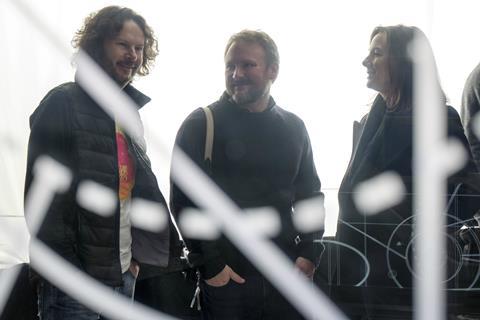
Star Wars: The Last Jedi director Rian Johnson (middle, main picture) and producer Ram Bergman (left, main picture) collaborated on their first film, the low-budget high school noir Brick, and it took Sundance by storm in 2005. Now, by way of The Brothers Bloom and Looper, they have captured the attention of a global audience enamoured of a galaxy far, far away.
As the eighth entry in the 40-year franchise crosses $800m worldwide through Disney after less than two weeks in release, the long-time collaborators discuss how they got involved on the biggest franchise in existence, working with Lucasfilm chief Kathy Kennedy and spending time with Carrie Fisher and Mark Hamill, and look ahead to their Star Wars trilogy.
You two have worked together since Brick won admirers at Sundance in 2005. How did you get together?
Ram: A mutual friend who was a producer at the time sent me the script and I read it and realised I’d never read anything like that. We met in Mel’s Diner and Rian had a different producer and had been trying to make the movie for six or seven years for $1-3m. It was a more straightforward approach and he was trying to get a ‘name’ cast and I told him it was the wrong way and the movie was too ambitious and too big. I didn’t see anybody letting him do it. At the time video was struggling and I was afraid if he made the movie and it didn’t turn out as commercial as everybody expected, somebody would push it straight to video. So I told him he should make it for a few hundred thousand dollars and this way you can control the movie, you van control the destiny of the movie, and there’d be less pressure on him. He asked if we could do that and I said yes. With that, he went to friends and family and raised $330,000 and we went to make the movie.
Rian It’s been a journey. It’s been a really good partnership.
Ram: Hopefully for the next 50 years.
How were you invited into the Star Wars galaxy?
Rian: We’d met Kathy Kennedy [Lucasfilm president] a few times, just general meetings, and never in a thousand years did I think I was in the running for something like this, but I was a big fan of hers and always went along. So she called me in [in 2014] and I thought it was going to be another ‘general’ and she closed the door and asked if I’d be interested in doing this. It was very unexpected. I asked if I could think about it and took a little bit of time and had conversation with Ram and at the end of the day realised nothing on earth could make me happier than taking a swing at this.
Were you a fan of the franchise?
Rian: I was a Star Wars fan when I was a little kid. It was my whole world. It’s hard for me to separate my childhood from Star Wars.
What was your take on The Last Jedi?
Rian: I saw this as a middle chapter of the trilogy, so this was the second act of the movie and our job here was to challenge each one of the characters; throw the hardest thing possible at them. And that’s going to end up leading you to some unexpected places, similar to The Empire Strikes Back. It is the one where it does a little bit of a shift tonally, and also in terms of the direction from the previous film. Empire did the same thing. That was a natural by-product of trying to make each one of these actors have a very dramatic arc where we see what they’re made of.
What did you see as the pitfalls as you embarked on this?
Rian: I wanted to avoid being boring [laughs]… For me, although this arguably made it more risky and dangerous as oppose to less, for me the thing I felt I needed to avoid was making the movie from a place of fear, and fear of how fans would react to it. Having been a Star Wars fan myself for my entire life, I know from first-hand experience how every fan has a different set of expectations from a Star Wars movie. I also know that telling a story you’re coming in with some dragon in the back of your head and some abstract notion of what people want and what they don’t and making them happy by giving them that, you’re going to freeze up and second-guess every decision you make and you’re going to make a crap movie. That’s the one thing that would disappoint everybody. The big thing for me to avoid was reacting out of fear of what people would think, and cutting yourself loose to take chances and go to the places that felt most interesting to me and felt vivid and alive and interesting that engaged these characters without fear.
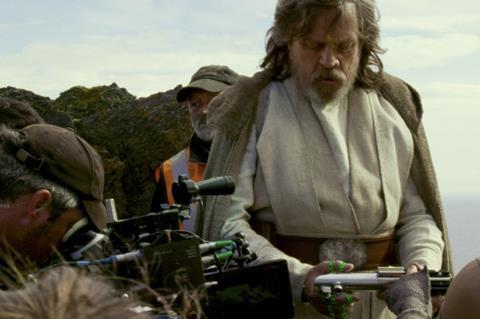
We see Luke Skywalker riddled with doubt. Mark Hamill has said he had initial reservations over that. Why was this storyline important to you?
Rian: We don’t know much about Luke from The Force Awakens, but what we do know is pretty big. His friends are all fighting the good fight and he’s taken himself out of the fight and he’s exiled himself on an island. Knowing Luke as a hero growing up, I knew that he must think he’s doing the right thing by doing that; he must think it’s the best thing for his friends and for the galaxy that he’s taking himself out of the equation. Because he’s identified as the last Jedi in that means he’s taking the Jedi out of the equation. So that leads you down a path and the choices become fewer than you’d imagine. I had to walk down that path and figure out how to come up with why Luke was there and explain it and believe it and that led me to where he was at in the movie. There were no other options.
What were some of the first images of The Last Jedi that entered your head?
Rian: I had the image of Ray in the mirror cave. For some reason that very strikingly came into my head. I had the idea of the red and white planet just as a visual idea. I didn’t know where it was it was going to fit in. Mostly the beginning of the process was starting with each one of these characters and figuring out what their journey was going to be and any vague images I had they either attached themselves to that spine or they fell away.”
What was it like collaborating with Kathy Kennedy? She is viewed as the keeper of Star Wars lore and has had no problem saying goodbye to directors on other projects whose vision did not tally with what Lucasfilm wants.
Rian: Kathy [main picture, at right] was a great collaborator. There’s a group of folks at Lucasfilm and they call themselves the story group and it was Kiri Hart, Pablo Hidalgo, Leland Chee, Diana Williams – there’s a whole group of them – Rayne Roberts – and they’re a group of development folks. They’re absolutely lovely. I really got along well with them. I decided when I started writing this I wanted to live in San Francisco for a few months so I could go in twice a week and kind of vomit out everything to them, just so I didn’t feel quite so alone in the process. It wasn’t like they were policing and guiding me into line. It was almost the opposite where I’d be going down a path and saying, ‘This is kind of different. Is this OK? Can I do this? There was a danger of me self-editing, feeling like, ‘God, maybe I can’t do this in a Star Wars movie.’ Nine times out of 10 they were saying, ‘That is really weird and different – go for it.’ So they were really enabling as opposed to policing, which was creatively freeing and let to some very interesting places.
You delivered the script in January 2015. When did production take place, and where?
Ram: We shot from February 2016 for about 100, 110 days.
Rian: We were mostly in Pinewood, just outside London. We were in Ireland for three weeks, and Croatia for a little bit but the lion’s hare was in Pinewood. Skellig Michael is the actual island off the coast of Ireland. We were able to shoot three days there and did a little pre-shoot months before principal because of weather conditions and because it’s a bird sanctuary there’s a limited window when you can get there. The majority of the island stuff we did on the West Coast of Ireland. Croatia was for Casino City when they go through the streets.
What were some of the logistical challenges of production?
Ram: When Rian gave me the first draft of the script, his concern the movie was small. I said, ‘No the movie’s big.’ When you read it, it felt very intimate. When we gave the script to Kathy the first time she absolutely loved it. She was saying to me, ‘How the hell are you guys going to make this movie? It’s giant.’ I said, ‘Really? It doesn’t feel that big to us.’ And once you start digging in you realise the movie is big, because you don’t stay in one place more than a minute, so you’re realy moving and when you break it down we realised we had initially something like 165 sets. We realise it wasn’t possible on a 100-day shoot. As we got closer [to the start of principal photography] we worked out how to combine sets and we got it down to 125 sets, which is still unheard of for a 100-day shoot. The thing is Rian was very prepared – he knew exactly what he wanted and he communicated to all the heads of department, who are the best in the world. When you have a long time to prep, you can really specifically prep into the details. It’s not that it’s not complicated, but it’s totally do-able. I can’t imagine doing the same thing with only six months prep, which is what you usually get on those movies, but because the script was in a very good place when he first delivered it, it was 14 months before we started filming – which doesn’t happen, ever – we could realty prep the movie with everybody else and figure out how to do it in the most economical way.
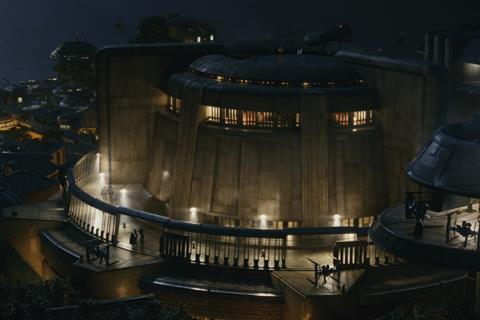
Casino City offered insight into war profiteering, which is an approach we haven’t seen before in Star Wars movies. Why did you go there?
Rian: It was exciting to me, the idea of opening it up a little. Also the idea of having this middle section, because we were going to see a lot of island and spaceship hallways, so thematically to get a chance to look at he murkier section of where and how these wars are financed and who benefits was interesting.
Star Wars scenes move along rapidly. Was it an adjustment to tell a story like that?
Rian: Not really. Because with the other movies I’ve done, they’ve all been to some extent riffs on genre. Star Wars is genre and it’s a genre I love and have loved my whole life. It was very similar to the other films. I know what a Star Wars movie feels like. I love it. How do I get in there and engage with it personally, you know? How do I use it to some unexpected ends in terms of bringing you to some emotional places you don’t expect, but using the tools of what a Star Wars movie feels like and looks like. For me, that was starting a couple of steps ahead because I didn’t have to do homework because I intimately knew these movies growing up.
What were some of the most challenging sequences to shoot?
Ram: The horse chase scene was a lot of moving parts. The casino set itself was our biggest set – the grand ballroom of the casino, on those days we had 30 creatures—
Ram: We had 70.
Rian: 70? That means had 150 puppeteers working those creatures plus several hundred of extras and 65 make-up artists. A hugely expensive day. That was probably the most challenging day.
Ram: Even small sets were challenging, like figuring out how to do the mirror cave. Technically it was a huge challenge for the effects guys. Once you get into the details, but again we were able to prepare it and pull it off.
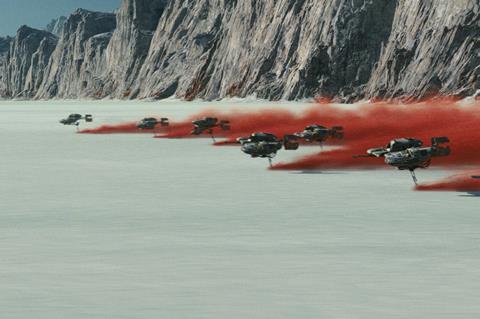
What’s the red stuff on the planet in the climactic battle?
Rian: It’s a mineral. The idea is it’s a ruby-like sheets of red stuff that these skis dig up. A layer of salt on top. It’s snowing on top of that. ILM did such a great job with that sequence.
Was there a stage in your careers when you felt you were ready to tackle something like Star Wars?
Rian: No not really. Every single step even going back to having made shorts film my whole life then making Brick, which was a real movie with a big crew I felt, ‘Am I going to know how to do this?’ And then going from Brick to Brothers Bloom, where I was going from a $350,000 movie to a $16m one and working with bigger name stars, I had the same feeling. And then Looper. Every single time you make a new movie you wonder, ‘Can I do this?’ it didn’t feel much beyond that.
Ram: I never had a doubt, because he’s the writer, he’s the director, and he knows every detail in the movie. There’s a lot of talented people out there but sometimes they don’t know how to articulate their vision, but he’s so good about communicating what he wants that’s inside his head and at the same time he’s very collaborative with the heads of department. There was never a question. Even clearly we’d never had the experience with the effects aspect – we had some on Looper but nothing like this – and you talk to all the visual effects supervisors and people at ILM and they will tell you they’ve never seen anybody like Rian, how specific he is. I never had a doubt.
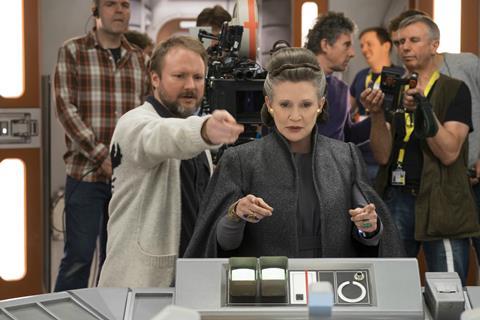
What was it like working with Carrie Fisher?
Rian: We had shot all [her scenes] and we wrapped in August and she passed away in [December 2016]. We had put it all together, pretty much, and we chose to not alter it, so the performance she gave is the one you see in the film. She is extraordinary. She’s a writer first and foremost, more than a performer that’s how we bonded. Those were my favourite memories of her – sitting around and playing with words. I fell lucky I got even a little bit of time with her.
The Kylo Ren storyline is great and the interaction with Ray is one of the highlights of the film
Rian: Isn’t he great? Adam [Driver] is so great in that. That was one of the things I was excited about digging into. There were these great characters that JJ [Abrams] and Michael [] and Larry [] created. The potential that was in them. I was rubbing my hands together and I thought I had to figure out a way to force these two characters to interact during the course of the film to bring it to some kind of interesting place. That was a challenge.
And you brought Yoda back!
Rian: Once I realised he was going to have a place in this movie, I realised Luke’s connection to them was from the original trilogy so we were going to go back to that version of him; we were going to go back to the puppet. So [creature designer] Neal Scanlon and his team found the original mould and they recreated that Yoda puppet and Frank Oz came back and ‘puppeteered’ it. On set it felt like we could have been back in whenever they shot Empire in the early 80s. It was really magical.
You’re making a Star Wars trilogy? What can you tell us about that?
Rian: So J.J. Abrams is writing Episode 9 now with Chris Terrio and [the trilogy] is going to be separate, down the line. We haven’t worked out the timeline for when that’s going to happen. It’s completely separate from this. Basically my pitch to Kathy and to Disney was, ‘It’s going to be one story told over three movies. Go to new places, meet new people. Broad, open, blue sky of a canvas to work on. Let’s make a great new Star Wars movie.
What’s next?
Rian: I have a couple of really well formed ideas I’ve been working on before this came around. One in particular working— I don’t know, we’re working on the timing of the new trilogy and I would love to slip something in before [the trilogy] and bust something out. It would be fun.
What is it?
Rian: Not yet. I don’t want to jinx it because also I have to finish writing it




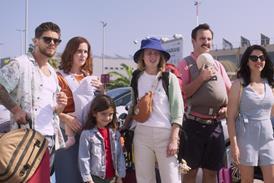
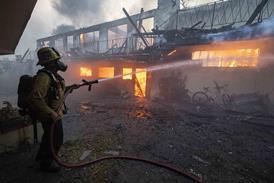

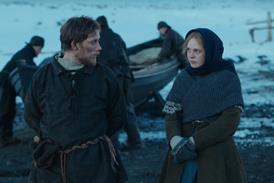
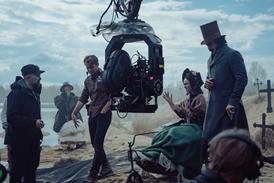

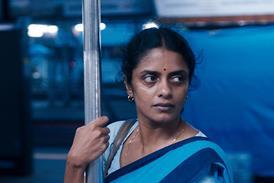


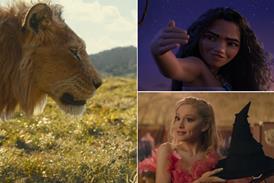
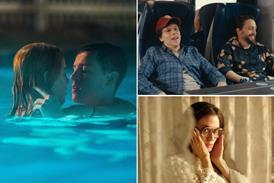
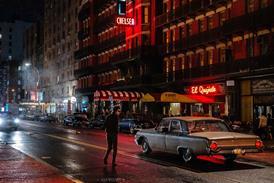

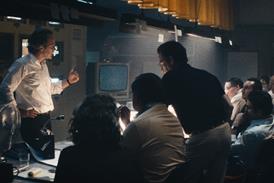







No comments yet